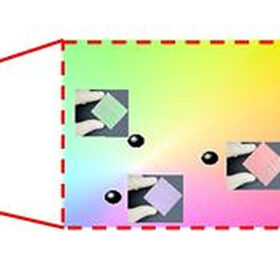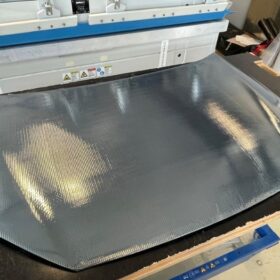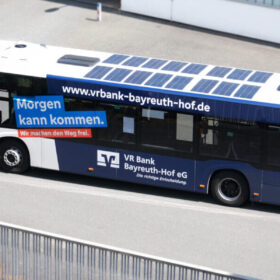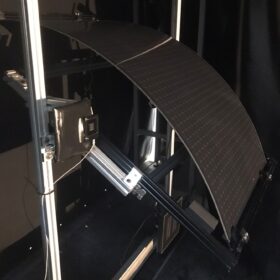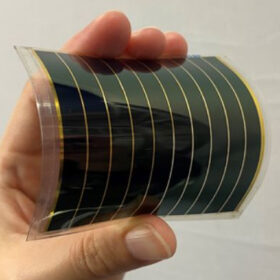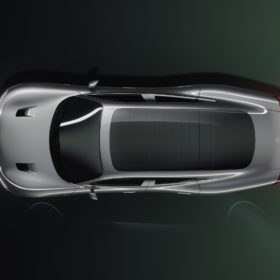New techique to color flexible thin-film BIPV, VIPV panels
Researchers in South Korea have developed a process to enable colored and flexible, thin film modules suitable for vehicle and building-integrated PV applications. It is reportedly a low-cost process that does not significantly impact power conversion efficiency.
Fraunhofer ISE integrates solar cells into car hood
Germany’s Fraunhofer Institute for Solar Energy (ISE) has advanced vehicle-integrated PV (VIPV) technology by installing solar cells directly onto a standard sheet-metal car hood. The researchers placed a 115 W prototype array on the hood of a Volkswagen with a specialized lamination process.
Sono Motors equips first bus with PV retrofit solution
Sono Motors has equipped its first bus with its PV retrofit solution, featuring 16 semi-flexible rooftop solar modules to feed 1.4 kW of output into the vehicle’s battery system.
Collimated solar simulator for curved photovoltaic panels
Researchers in Spain assembled an experimental solar simulator for vehicle-integrated and curved solar panels. They found that the measurements of the short-circuit current of the cells followed the ideal cosine response of the curvature with differences lower than 0.5%.
Enecoat, Toyota develop perovskite solar cells for vehicle-integrated applications
Toyota says it will combine EneCoat’s perovskite solar cells and its own in-vehicle technologies for solar panels. Enecoat has developed a perovskite module conversion efficiency of 19.4%.
Efficiency of solar vehicles in real-world conditions
A new three-year pilot project will assess the efficiency of vehicle-integrated PV and verify it with on-the-road monitoring and testing. The goal is to predict the charging infrastructure needed for electric vehicles with PV modules.
Hydrogenated amorphous silicon oxide solar cell for BIPV, VIPV, agrivoltaics
Scientists in Spain have developed a transparent solar cell with an average visible transmittance of up to 66%. The device could be used for ubiquitous device functionalization, including indoor PV and agrivoltaics.
Video: TNO expert discusses outlook for future development of solar vehicles
Bonna Newman, program manager at TNO, speaks to pv magazine about the road forward for vehicle-integrated PV, which will likely remain a niche over the short term, despite recent industrial developments. Several companies have started production, but high-volume output and the potential of other PV technologies beyond crystalline silicon remain key challenges for the future of vehicle-integrated solar.
Vehicle-integrated solar kit may reduce frequency of recharging by 14%
Developed by the French research institute Liten, the prototype kit consists of a 145 W photovoltaic panel, a magnetic rear panel, and an MPPT charge controller. It also includes a battery and a micro-inverter that can be used to inject the stored energy into the grid when the vehicle is recharged.
Vehicle-integrated photovoltaics for low-speed electric vehicles
Canadian startup Capsolar claims its flexible solar modules can be adapted to any type of low-speed electric vehicle with no extra modification and custom work. The panels have an efficiency of 21.3%.
